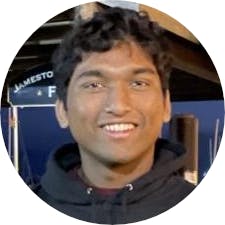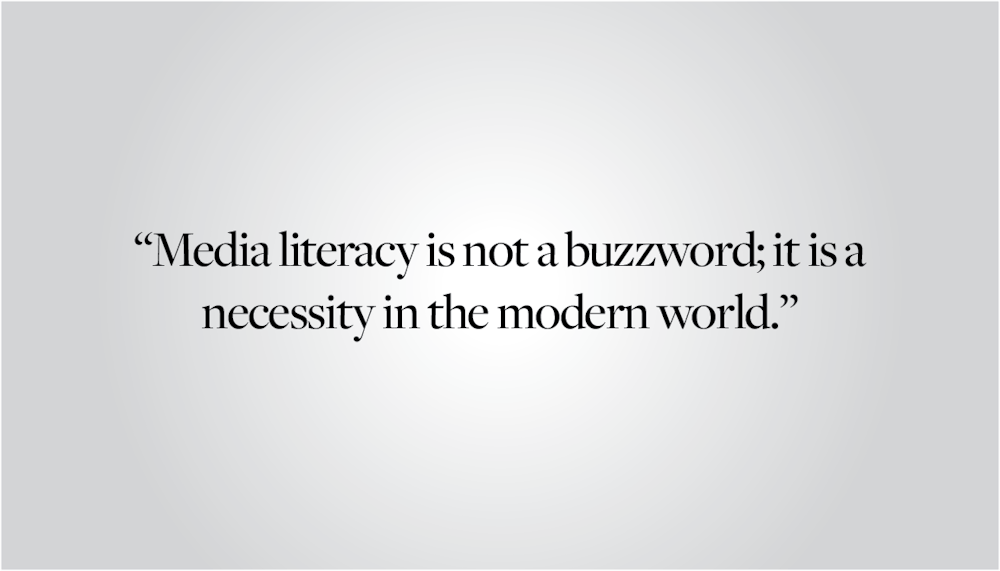Thanksgiving is a time for love, food and family. It is also a time to argue with our relatives over a plate of turkey, as many of us were reminded last week. These often heated conversations have made it evident to me that America is media illiterate — unable to parse the many channels through which information reaches us and form judgments about their veracity. For the good of our family gatherings and democracy alike, educational institutions must fill the gap and teach people better media literacy skills.
Americans today increasingly rely on dubious sources of information. A recent study by Pew Research found that half of Americans sometimes or often receive their news from social media, and around 30% regularly receive news from Facebook and YouTube. These sites are much less regulated than traditional media sites and use algorithms that can promote disinformation. A 2014 study from the University of Chicago found that almost half of Americans believe at least one conspiracy theory, though this number has likely increased since. But so what if your dad believes we faked the moon landing? Our unreliable media landscape has real-world implications for our democracy. It is why today, 63% of Republicans and independents who lean Republican falsely believe that the 2020 presidential election was rigged, a pernicious conspiracy that led to a terrorist attack on the U.S. Capitol. Due to this extreme media landscape, America today is more polarized than it has ever been.
In an age of unprecedented connectivity, the ability to assess the credibility of different sources is essential for an engaged citizenry. Media literacy is not a buzzword; it is a necessity in the modern world. After all, how can we reach consensus on critical issues if we cannot even agree on what is true? In the past, Americans engaged with just a few shared sources of information. However, with the rise of social media and its associated algorithmic echo chambers, today we not only disagree on the issues but also on the facts. Something needs to change.
In a recent dinner table debate, I was asked by a family member what makes a credible source and if I would trust an article from, say, an Iranian newspaper. The key intuition in answering these questions is that every source is simply a perspective. When the Wall Street Journal publishes an article, it must be read with skepticism but an appreciation of the process that goes into the Journal’s reporting. When Russia Today — a news network controlled by the Russian state — publishes, I appreciate the perspective offered as a reflection of views in Russian society. However, I grant little weight to the factual reporting offered, as it is a reflection of RT’s funding source and Russia’s constrained media environment. While selecting the news in this way may lead to a skewed picture, “Western bias” can be countered through a diversified media portfolio that includes credible independent outlets from many nations.
A good media diet is much like a good diet in general — diverse in its content. Instead of consuming just one source of information, we ought to digest many and formulate our own opinions. However, we cannot rely on social media for this information as it often lacks verification and crucial context. Indeed, Pew Research also found that Americans who rely on social media for information are less tuned in and knowledgeable than those who do not. This is not at all to say the news always gets it right. Indeed the New York Times acknowledged its failings in reporting about Iraq in the aftermath of 9/11. The difference lies in the care that writers and editors put into creating that reporting and the willingness to acknowledge failure.
As I have previously written, college attainment is dividing America, and media literacy is just one area in which degree holders leave non-holders behind. As only 37.9% of adults over 25 hold a bachelor’s degree, secondary schools must do better to ensure students can critically digest information even if they don’t attend college. The Common Core State Standards address this deficit in part, but media literacy must be a sustained conversation spanning grade levels and subject areas. Courses like the International Baccalaureate’s Theory of Knowledge class, which aims to teach epistemology, are critical and must become a standard part of curriculums.
Colleges and universities must also do more. Too numerous are cases of Ivy-educated politicians, either for malicious or ignorant reasons, weaponizing information by spreading dangerous falsehoods for their own political gain. Examples that come to mind include President George W. Bush, Senator Ted Cruz and presidential candidate Vivek Ramaswamy, among others. Not only do these falsehoods sully the repute of the schools involved, but they indicate a failure to teach proper information consumption skills which has grave implications for our society. Universities must train students to think critically about knowledge and place an emphasis on ethics in doing so.
While disagreement is natural, as citizens we ought to be conscious of where we source our information. This will not only lead to us being more informed but perhaps also more able to reach a compromise and peacefully enjoy that Thanksgiving turkey dinner.
Tas Rahman ’26 can be reached at tasawwar_rahman@brown.edu. Please send responses to this opinion to letters@browndailyherald.com and other op-eds to opinions@browndailyherald.com.

Tas Rahman is an opinions editor at the Brown Daily Herald writing about issues in higher education. When he's not coding or studying biochemistry, you can find him hiking and enjoying the great outdoors.





